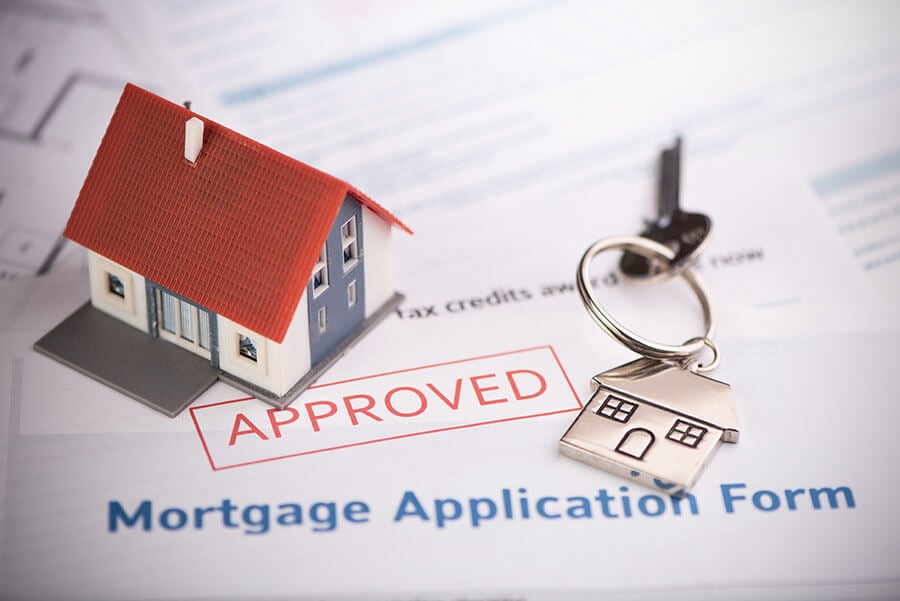Maximize Your Homebuying Potential with Conventional Mortgage Loans
Maximize Your Homebuying Potential with Conventional Mortgage Loans
Blog Article
The Essential Variables to Consider When Finding In Between Fixed-Rate and Variable-rate Mortgage Lendings
When assessing home loan alternatives, borrowers encounter a crucial choice in between adjustable-rate and fixed-rate financings, each providing potential pitfalls and distinct benefits. Secret factors to consider such as rate of interest rate security, predictability in regular monthly repayments, and the ramifications of potential price adjustments can significantly influence lasting economic health and wellness. Understanding the anticipated duration of homeownership and the general cost of borrowing can form one's method. As these factors intertwine with private financial circumstances and run the risk of resistance, the implications of this choice might not be as uncomplicated as they appear. What subtleties should be prioritized in this vital decision-making process?
Passion Rate Security
When choosing a home mortgage, comprehending interest price stability is important for informed decision-making. Interest prices can considerably impact the total price of a mortgage, and recognizing the nature of these rates is necessary for consumers.
On the other hand, adjustable-rate home mortgages (ARMs) start with lower preliminary prices that may alter regularly based on market conditions. While this can cause reduced payments at first, it additionally introduces uncertainty, as debtors might encounter boosted payments if rates of interest climb. For those considering an ARM, it is essential to assess the chance of rate modifications, the potential for repayment increases, and the length of the first fixed-rate period.
Eventually, the selection in between fixed-rate and adjustable-rate mortgages depends upon individual threat tolerance and monetary conditions. Recognizing passion rate security aids debtors make notified decisions that align with their long-term monetary objectives.
Month-to-month Payment Predictability
While consumers often prioritize rates of interest stability, the predictability of month-to-month repayments is just as essential in the home loan selection procedure (Conventional mortgage loans). Month-to-month repayment predictability plays an essential role in budgeting and monetary preparation, as it directly impacts a home owner's cash flow and overall financial health
Fixed-rate mortgages supply a consistent monthly payment throughout the life of the financing, enabling debtors to prepare for and intend their expenses successfully. This security can be especially helpful for novice buyers or those on a set income, as it eliminates the uncertainty connected with fluctuating payments.
Alternatively, adjustable-rate mortgages (ARMs) usually feature lower initial payments that can change gradually, bring about potential variability in monthly obligations. While originally attractive, this unpredictability can complicate economic planning, specifically if customers do not represent future rate changes.
Potential Price Adjustments
In the realm of variable-rate mortgages (ARMs), prospective price modifications stand for a significant factor that borrowers must very carefully take into consideration. Unlike fixed-rate mortgages, where the interest price stays unchanged for the life of the financing, ARMs are characterized by rising and fall passion rates that are linked to market indices. This variability can cause considerable changes in regular monthly payments, influencing the consumer's economic preparation and budgeting.
Commonly, ARMs have a preliminary fixed-rate period during which the rate of interest is secure. Hereafter duration, nevertheless, the price adjusts at fixed periods-- typically each year. Borrowers must be conscious of the margin and index made use of to determine these changes, as they directly affect future rate of next interest. Additionally, ARMs commonly include caps that limit just how much the rate of interest can boost at each change and over the life of the loan, which can supply some level of protection against drastic price hikes.
Recognizing these prospective adjustments is vital for customers, as they straight impact long-lasting settlement obligations. Therefore, examining individual financial scenarios and risk tolerance is crucial when determining whether an ARM straightens with one's economic goals.
Lending Term Factors To Consider
Funding term factors to consider play a crucial role in the decision-making process for borrowers selecting in between adjustable-rate and fixed-rate mortgages. The size of the car loan term dramatically affects month-to-month payments, rate of interest rates, and total monetary preparation.

Eventually, borrowers have to evaluate their personal conditions, economic goals, and market conditions when weighing the implications of car loan term options within each mortgage kind.

Overall Cost of Loaning
The overall cost of loaning is an important aspect that can considerably influence a consumer's option between fixed-rate and adjustable-rate home loans. Fixed-rate home mortgages supply predictable monthly repayments, as the rates of interest stays consistent throughout the finance term. This predictability can cause lower total costs, specifically in a steady or decreasing rate of interest atmosphere. Customers can budget effectively, knowing their repayments will not change.
Conversely, adjustable-rate home mortgages (ARMs) generally start with reduced first prices, leading to decreased ahead of time costs. These prices can boost after a first period, why not try this out leading to possibly greater long-term costs. Borrowers need to consider the frequency and degree of rate modifications, as well as the total loan period, to precisely evaluate the economic implications.
Furthermore, the total expense of borrowing includes not only rate of interest rates however also fees and other associated prices, such as shutting costs and insurance policy (Conventional mortgage loans). When evaluating mortgage options, consumers should conduct a thorough cost evaluation over the life of the car loan. By doing so, they can make an informed choice that lines up with their financial goals and risk resistance
Conclusion
Rate of interest price stability and monthly repayment predictability are vital for effective budgeting, while the potential for price modifications in ARMs introduces financial uncertainty. Additionally, the anticipated duration of homeownership and the total cost of borrowing, including interest prices and associated charges, need to align with specific financial conditions and risk tolerance.
Key factors to consider such as rate of interest price security, predictability in Get More Information month-to-month settlements, and the implications of prospective rate changes can dramatically influence long-lasting monetary wellness. Rate of interest prices can significantly influence the general price of a mortgage, and recognizing the nature of these prices is vital for customers. Unlike fixed-rate home loans, where the interest price continues to be unchanged for the life of the finance, ARMs are defined by fluctuating interest prices that are tied to market indices. In addition, ARMs often include caps that limit just how much the interest price can increase at each modification and over the life of the car loan, which can supply some degree of protection against extreme price walkings.
Rate of interest price security and month-to-month repayment predictability are vital for effective budgeting, while the possibility for price adjustments in ARMs introduces financial unpredictability.
Report this page